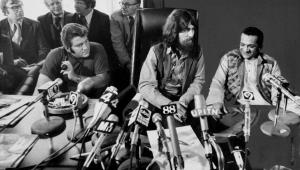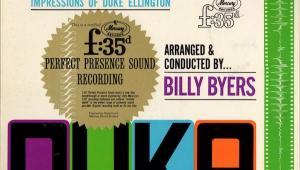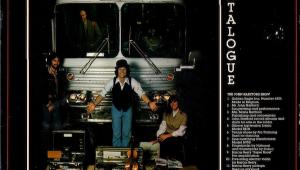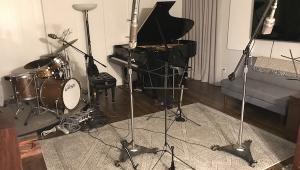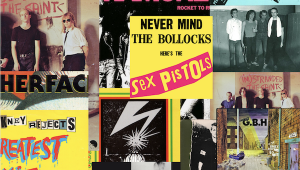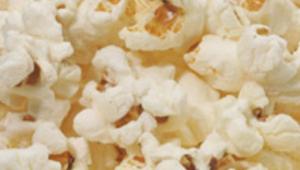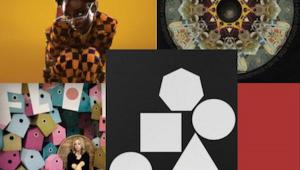Got Live If You Want It! Part 6
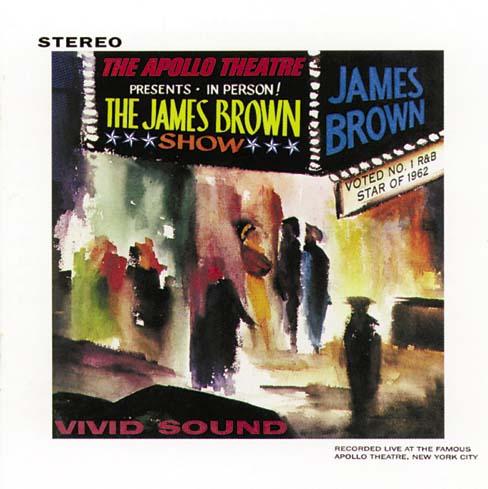
ERIC DOLPHY
Live at the Five Spot Vols. 1 & 2; Memorial Album
Original Recordings Produced by Esmond Edwards
Engineered by Rudy Van Gelder
Reissue produced by Eric Miller
Digital transfers and editing by Dave Luke
Original Jazz Classics OJC 133, OJC 247, OJC 353 (CD)
Music: 10
Sound: 8
Multi-reed player Eric Dolphy was a key contributor to the music and innovations of so many major figures in jazz (Charles Mingus, John Coltrane, Ornette Coleman) that it's hard to understand why he almost never had an opportunity in his brief lifetime to front his own group of top-flight musicians playing his own brilliant brand of modal jazz which was so admired by his peers.
Luckily for us, one of the few live performances of Dolphy as bandleader and fronting a first-rate ensemble has survived for years on tape and various reissues. Within days of recording the seminal Free Jazz album with Coleman, and just a few months before taking part in Coltrane's equally seminal Village Vanguard recordings, Dolphy played a dive in the Lower East Side with a group he co-led with the brilliant young trumpeter and composer Booker Little.
The group had a world-class rhythm section of Ed Blackwell on drums, Richard Davis on bass, and Mal Waldron on piano. And despite a piano as atrociously out of tune as any ever recorded, engineer Rudy Van Gelder committed a night's worth of music to tape.
The fiery brilliance of the extended modal soloing, and Dolphy's and Little's unique approaches to jazz composition were in full flower. And the telepathic communication between Blackwell and the soloists make this some of the most adventurous, hard-charging, and emotional music ever played at the nexus of hard bop and free jazz. That Little would die of uremia within months of this July 1961 recording, and Dolphy only a few years later, make these recordings all the more precious.
The music from these shows was originally released on three LPs issued years apart on the Prestige family of labels - Eric Dolphy Live at the Five Spot Volumes 1 and 2, and the Eric Dolphy and Booker Little Memorial Album. A handful of additional tracks leaked out over the years on various anthologies. The original three disks remain in print on both LP and CD. Start with Vol. 1's famous "Fire Waltz" and the awesome 22-minute "The Prophet." The Original Jazz Classics vinyl reissues sound typical of Van Gelder's live recordings of the day: lots of room ambiance (clinking beer bottles and cash-register rings abound), nice drum presence, somewhat lightweight bass (but less so than was typical of the day), and a very hard-left and -right stereo perspective.
All the material from the Five Spot recordings - including the extra tracks like Dolphy's solo bass clarinet reading of "God Bless the Child" - are available in one place on the Dolphy Complete Prestige Recordings box set. Based on the sonics of the box set remasters, it seems like the digital stuff is robbed of significant chunks of ambience and is too bright on top. Little's horn is missing its buttermilk qualities and is much more forward, though the increased forwardness helps give the bass a sense of weight. Go for the vinyl if you can get it.
- Jason Chervokas
JAMES BROWN
Live at The Apollo
Original recording produced by James Brown
Engineered by Tom Nola
Reissue produced by Harry Weinger
Mastered by Tom Ruff at PolyGram Tape Facility, Edison, NJ
Polydor 843 479-2 (CD)
Music: 11
Sound: 8
There are a couple of different ways of looking at this, the most justifiably famous live album of the rock era (with the exception of the still-unreleased but widely bootlegged concert Bob Dylan and The Band gave in Manchester, England, in 1966).
The first is the historic perspective. Today we can see James Brown as one of the pivotal figures in 20th-century music. His breakthrough rhythmic innovations of the mid 1960s have profoundly shaped all the music that came after, the way the breakthroughs of artists like Stravinsky, Schoenberg, Louis Armstrong, and Charlie Parker forever changed the sound of music.
But in 1962 Brown was a minor soul shouter with a short string of hits - mostly soul ballads - and a legendary road show that brought the house-wrecking energy of gospel shouters like Archie Brownlee and Silas Steele into R&B. Brown decided he wanted to capture that on record, to the dismay of his record company, which didn't think recording live with a road band under less-than-ideal conditions was conducive to making hit records.
After a year of struggling to get the album released, Brown prevailed, and the result was his biggest hit album to date - one that solidified his budding career and became one of the most influential albums of the early 1960s.
The second perspective is musical: the record catches Brown in transition. Brown re-wrote and rearranged the 5 Royales' doo-wop hit "Think" at least three times during his career. The second reworking here is a cataclysmic event, the first hints of the surging, syncopated, guttural music that would become modern funk by the mid 1960s. But most of the music here is hardcore R&B, with Brown milking the crowd for all it's worth on ballads like "I Lost Someone."
Finally, this record is a remarkable document of an evening on the chitlin' circuit where Brown performed with a revue that included The Valentinos, Solomon Burke, Freddie King, and comedian Pigmeat Markham before Brown ushered in "Star Time" - a brief 36 minutes of which makes up this album. It's in this spirit that producer Harry Weinger re-channeled and remastered the PolyGram CD reissue with engineer Tom Ruff.
Weinger told me his intent was to give a representation of what it might have been like to be in the Apollo that night in 1962. The CD reissue is punchier, fuller in the midrange, and less sizzly in the highs than any previous release I've heard. Individual voices screaming in the crowd are absolutely distinct. Organ and bass and horns pop out much more richly than on the Solid Smoke 1980 vinyl reissue I had on hand for comparison - a version Weinger says was cut from a dub of the master. There is a Mobile Fidelity CD reissue which I haven't heard.
It ain't the greatest-sounding live recording ever, but what the hell; unless you were there, hearing it will startle and amaze.
- Jason Chervokas
Ed note: I have a second King Records pressing, the Mobile Fidelity CD, and the Polydor issue. The sonic perspective on the LP and gold CD is weird: it puts Brown and backup singers hard-left in one dry environment and the other instruments except for the drums hard-right in a second dry environment. The recording of the drum kit is bizarre: it's spread like a hovering giant across the soundstage and in a three-dimensional, airy ambience all its own. It is in steroidal stereo, everything else is in mono. Clearly the original mastering engineer and Mo-Fi's offered literal translations of what's on the tape. The Polydor reissue reduces the separation on the two track mix which was reduced live from an eight mike feed, pushing the vocal track toward the center for a more natural perspective. The Polydor, while brighter and somewhat harder than either the Mo-Fi or the original LP, is also more detailed and exciting. The Mo-Fi is out of print and the original is very expensive, so buy this CD reissue.
ALEJANDRO ESCOVEDO
More Miles than Money…Live 1994-96
Produced by Alejandro Escovedo, Bob Whitfield, and Erik Flannigan
Engineered and mixed by Erik Flannigan, Stony Mrugacz, Bob Whitfield, and Laurence Herman
Mastered by J. Tubb
Bloodshot BS 027 (CD)
Music: 10
Sound: 10
For the uninitiated, the career of Escovedo, the much-younger brother of the jazz and salsa player Pete Escovedo, and the uncle of former Prince protege Sheila E., answers this question: “What if there were a great, pure, and true rock 'n' roll singer/songwriter as good as Bruce Springsteen, but no one knew about him?"
That, in a nutshell, is this Austin resident's story. Between recording three solo albums on Watermelon and Rykodisc (which are loved by critics and a small contingent of fans), he's ended up working in a record store to keep his family eating.
He plays gigs, gets raves, gets some airtime on some college and adult-alternative stations, but sells fewer than 10,000 discs filled with mature, achingly beautiful songs and solid playing that always has a twist: a mix of horns or strings and a leaning toward punk. (He's played in a punk side project, Buick McKane, as well as Cowpunks, Rank and File, and a country-rock band, True Believers.)
The story behind this live album is almost as good as the album itself. A couple of devoted tapers, Bob Whitfield and Erik Flannigan, who have been making and trading live tapes for more than a decade, became Escovedo fans. They dutifully recorded dozens of small club shows with Escovedo's permission, at places like the Cactus in Austin and The Palms Playhouse in Davis, California. They mostly worked off the soundboards and did some shows from the audience, on two-track Sony and Denon DAT recorders.
Whitfield had done a live recording for folkie John Wesley Harding to sell at his shows, and the duo offered to do the same for Escovedo, who had just been dropped by Rykodisc. He was reluctant at first, but then agreed to do it.
They whittled 80 songs down to 11, getting an album that is at once live, with a studio's precision. No clunkers, no endless jams. Also, no audience sounds, stories, introductions, or applause. It has the revelatory strength of Nirvana's Unplugged in New York, focusing on the darker and quieter side of Escovedo's songwriting. His live gigs often mix in harder up-tempo rock with a bigger band, but they make for more difficult recordings on two-track.
Six of the songs feature only a four-piece band. Three of those include a cello. Most are originals, except for a gentle cover of The Rolling Stones' "Sway," a raucous "I Wanna Be Your Dog" that does Iggy Pop proud, and a piece of Lou Reed's "Street Hassle" woven into Escovedo's "Gravity" and "Falling Down Again."
Flannigan writes the Bootleg column for Ice Magazine and produces the Wall of Sound web site. His recording has the stark, real sound of Muddy Waters' Folk Singer. Flannigan complains that too many discs sit you in the 50th row and too many live engineers depend on crowd noise and added reverb effects to replicate a big arena.
"This gets you 20 rows closer," says Flannigan, who was amazed at the emotion Escovedo poured out in front of audiences of 75 people. “It almost fools you into thinking it isn't live at all and could be favorably compared to Springsteen's Nebraska."
The result for Escovedo has been a tremendous shot in the arm. The artist was depressed over losing his label deal and the tapers gave him the album in return for a mention in the credits. It has received rave reviews and has sold as many or more than any of his previous releases, on a budget of zero. After the disc came out, he hit the road with his acoustic lineup and got inspired to write more songs, according to Flannigan. "If you are us, this is what you dream of," says Flannigan. "Not only do you give the artist something he can use, but you help in some way to rejuvenate his momentum."
The album is a must for Escovedo fans and a decent introduction for newcomers, though I would also suggest 1992's Gravity and 1996's With These Hands (reviewed in TTA issue #15), which are musts for any singer/songwriter fan's collection.
-Brad Kava
Sidebar to Live album piece:
Editor's Choice:
Twenty One Great-Sounding Live LPs
Rock, Blues and Soul
Otis Redding Live In Europe (Volt S-416)
The Allman Brothers At the Fillmore East (Capricorn “pink label” SD 2-802 /Nautilus NR-11)
Little Feat: Waiting For Columbus (Warner Bros. “palm tree” 2BS 3140/ Mobile Fidelity MFSL 2-013)
The Who: Live at Leeds (British Track 2406 001)
Van Morrison: Too Late to Stop Now (Warner Bros. “palm tree” WB 2BS 2760)
Eno, Manzanera, others: 801 Live (British Polydor Deluxe 2302 044/ Japanese Polydor MPF 1101)
Various Artists: Ann Arbor Blues and Jazz Festival 1972 (“green/red” Atlantic SD 2-502)
Jazz:
Miles Davis Live at the Blackhawk Friday and Saturday Nights (Columbia “6 eye” CS 8469/70)
Mel Torme and Friends at Marty's (Finesse W2X 37484)
Sinatra At the Sands (Reprise “green/blue” 2FS 1019)
Nat King Cole At the Sands (Capitol black/rainbow rim SMAS 2434)
Various Artists: Clarinet Summit (India Navigation 1062)
Sonny Rollins: Our Man in Jazz (RCA “Living Stereo”/Classic LSP-2612)
Bill Evans: Waltz For Debby (Riverside black label RLP 9399/Analogue Productions APJ 009)
Herbie Mann: Live at the Village Gate (Atlantic “green/blue” 1380)
Joni Mitchell: Miles of Aisles (Elektra/Asylum AB202)
Folk:
Odetta: Movin' It On (Rose Quartz RQ101)
Joan Baez In Concert (Vanguard Stereolab black label VSD 2122)
Harry Belafonte: Belafonte At Carnegie Hall (RCA “Living Stereo”/Classic Records LSO 6006)
The Weavers: Reunion At Carnegie Hall (Vanguard Stereolab black label VSD 2150/Analog Productions APF 005)
Various Artists: The Newport Folk Festival, 1963 (six LPs, Vanguard VSD 79144-79149)
Note: Many of these titles have been reissued on CD and not auditioned. The Sinatra 20-bit remaster (46947) is superb, however, as is the Belafonte and the Rollins. The Live at Leeds CD (MCAD-11215/11230, limited-edition 12”x12” package) includes the entire concert and is therefore essential, and the sound is fine: better than the original in some ways, not as good in others. The original American Decca LP sounds mediocre.
Joni Mitchell is backed by Tom Scott and The L.A. Express on Miles of Aisles, so I put her under “jazz” with apologies. The Allman Brothers At The Fillmore East has been reissued on a fine-sounding but out-of-print gold CD (Mobile Fidelity UDCD 2-558), and there was a 1992 two-CD set (Polydor/Chronicles 314 517 294-2) containing digital remixes of various takes of the same tunes found on the original. The set also includes tracks from the five concerts which were subsequently issued on Eat a Peach and the Dreams anthology. The remix is brighter, thinner, and more reverberant, putting you further back in the hall; the bass, while deeper, lacks body and definition. The Nautilus 1/2-speed mastered LP is somewhat cleaner than the “pink label” Capricorn, but hardly worth the big bucks since the original is on thick Atlantic vinyl probably mastered by the great George Piros. It doesn't get much better than that. The American Polydor 801 album by Eno & co. is a pale facsimile of either the British or Japanese originals.
-MF
- Log in or register to post comments






